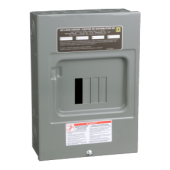severin20
New Member
- Joined
- Jun 18, 2020
- Messages
- 28
Hey Fam,
So let's say I buy a giandel 2200w pure sine wave inverter. It's got a few places to plug in extension cords, but no place with +- terminals to actually wire a house with outlets. Can I just plug an extension cord into the inverter and then cut the extension cord open and attach the normal yellow/white house wires to go around and wire a little off-grid cabin? Has anyone done this?
So let's say I buy a giandel 2200w pure sine wave inverter. It's got a few places to plug in extension cords, but no place with +- terminals to actually wire a house with outlets. Can I just plug an extension cord into the inverter and then cut the extension cord open and attach the normal yellow/white house wires to go around and wire a little off-grid cabin? Has anyone done this?




